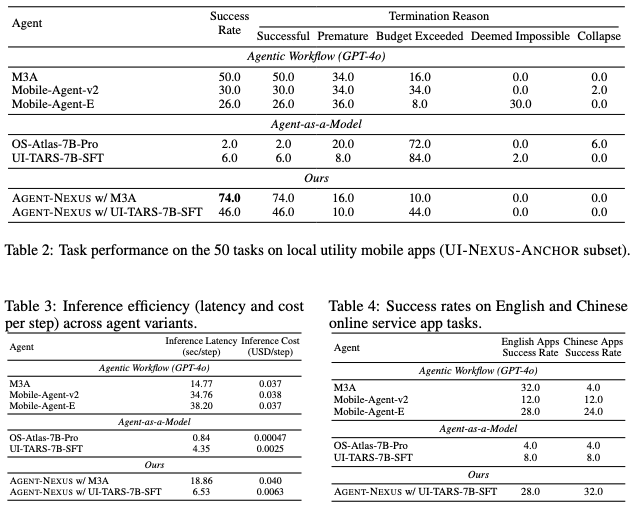
Autonomous agents powered by multimodal large language models have been developed to facilitate task execution on mobile devices. However, prior work has predominantly focused on atomic tasks—such as short-chain execution tasks and single-screen grounding tasks—while overlooking the generalization to compositional tasks, which are indispensable for real-world applications. This work introduces UI-NEXUS, a comprehensive benchmark designed to evaluate mobile agents on three categories of compositional operations: Simple Concatenation, Context Transition, and Deep Dive. UI-NEXUS supports interactive evaluation in 20 fully controllable local utility app environments, as well as 30 online Chinese and English service apps. It comprises 100 interactive task templates with an average optimal step count of 14.05. Experimental results across a range of mobile agents with agentic workflow or agent-as-a-model show that UI-NEXUS presents significant challenges. Specifically, existing agents generally struggle to balance performance and efficiency, exhibiting representative failure modes such as under-execution, over-execution, and attention drift, causing a visible atomic-to-compositional generalization gap. Inspired by these findings, we propose Agent-NEXUS, a lightweight and efficient scheduling system to tackle compositional mobile tasks. Agent-NEXUS extrapolates the abilities of existing mobile agents by dynamically decomposing long-horizon tasks into a series of self-contained atomic subtasks. Agent-NEXUS achieves 24 % to 40 % task-success-rate improvement for existing mobile agents on compositional operation tasks within the benchmark, without significantly sacrificing inference overhead.
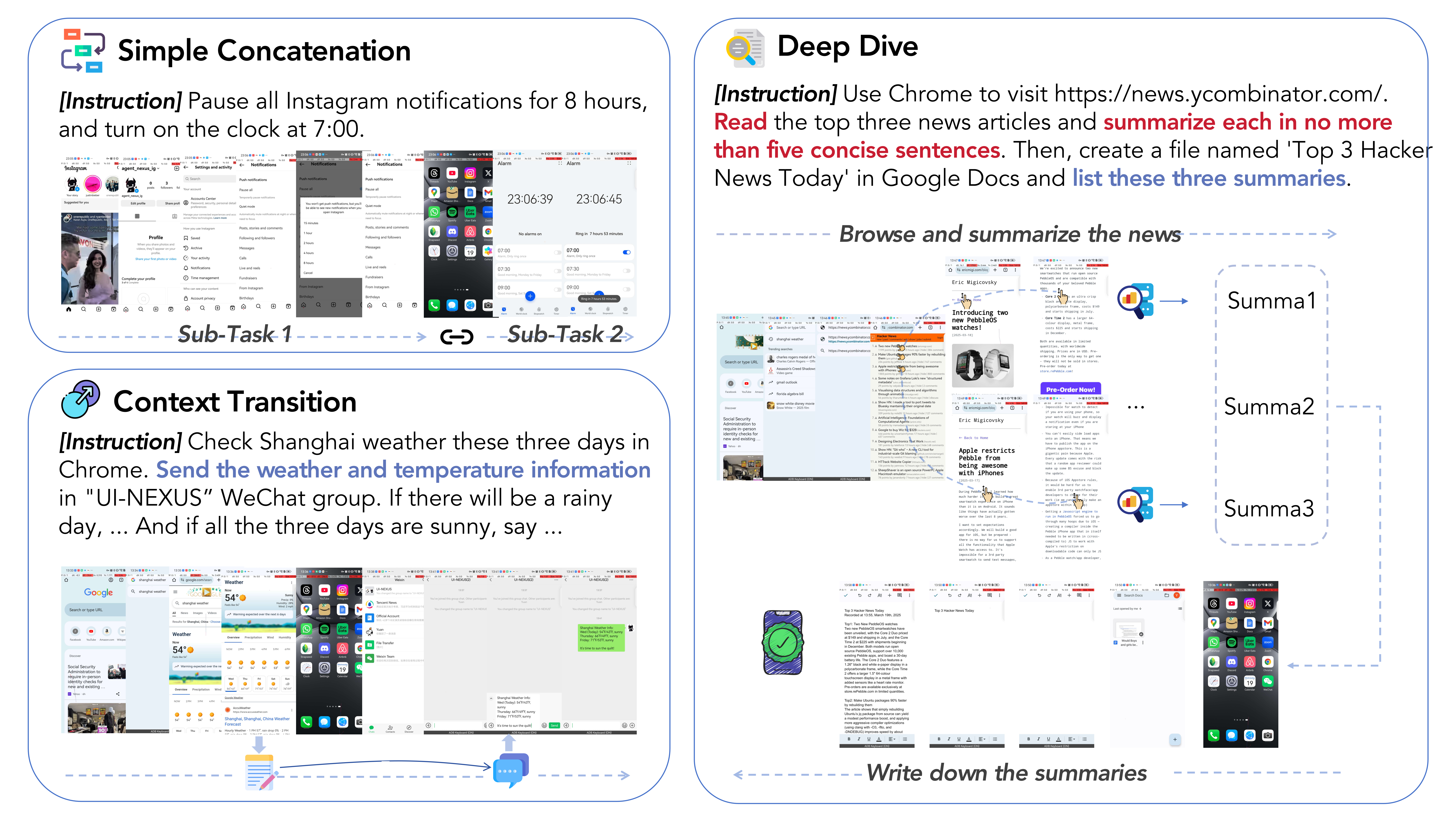
Towards system-level task automation, we categorize compositional mobile operation tasks into three types according to subtask dependency structures:
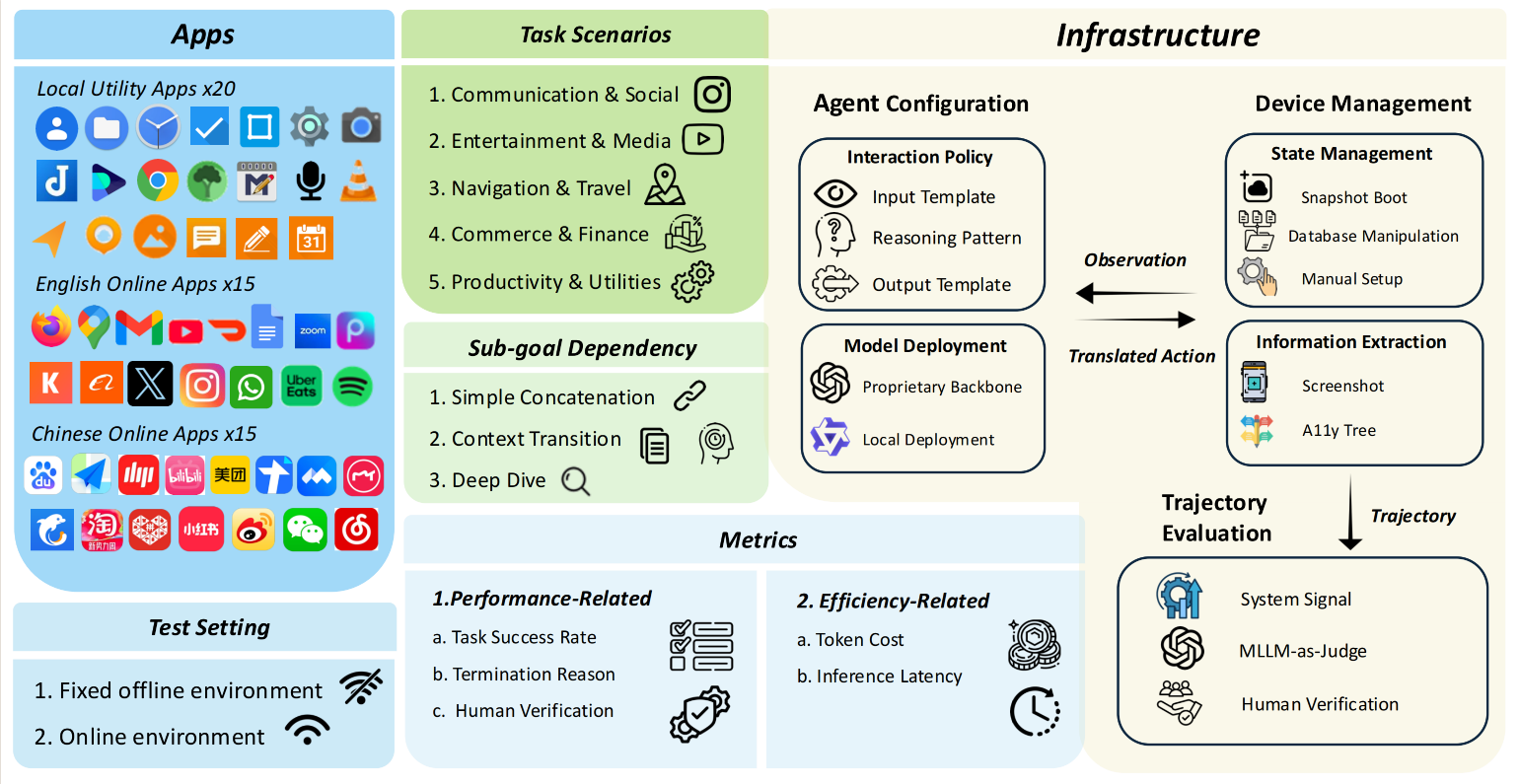
UI-NEXUS features comprehensive coverage of applications and task scenarios, systematic analysis of subtask dependencies, diverse evaluation metrics, and supports both fully controllable offline evaluations and real-world online tests. UI-NEXUS is built upon our unified plug-and-play framework that seamlessly integrates heterogeneous agents and devices.
To provide a scalable development toolkit, we implement an emulator initialization script that can easily set up the inner state of local utility apps via a JSON configuration file.
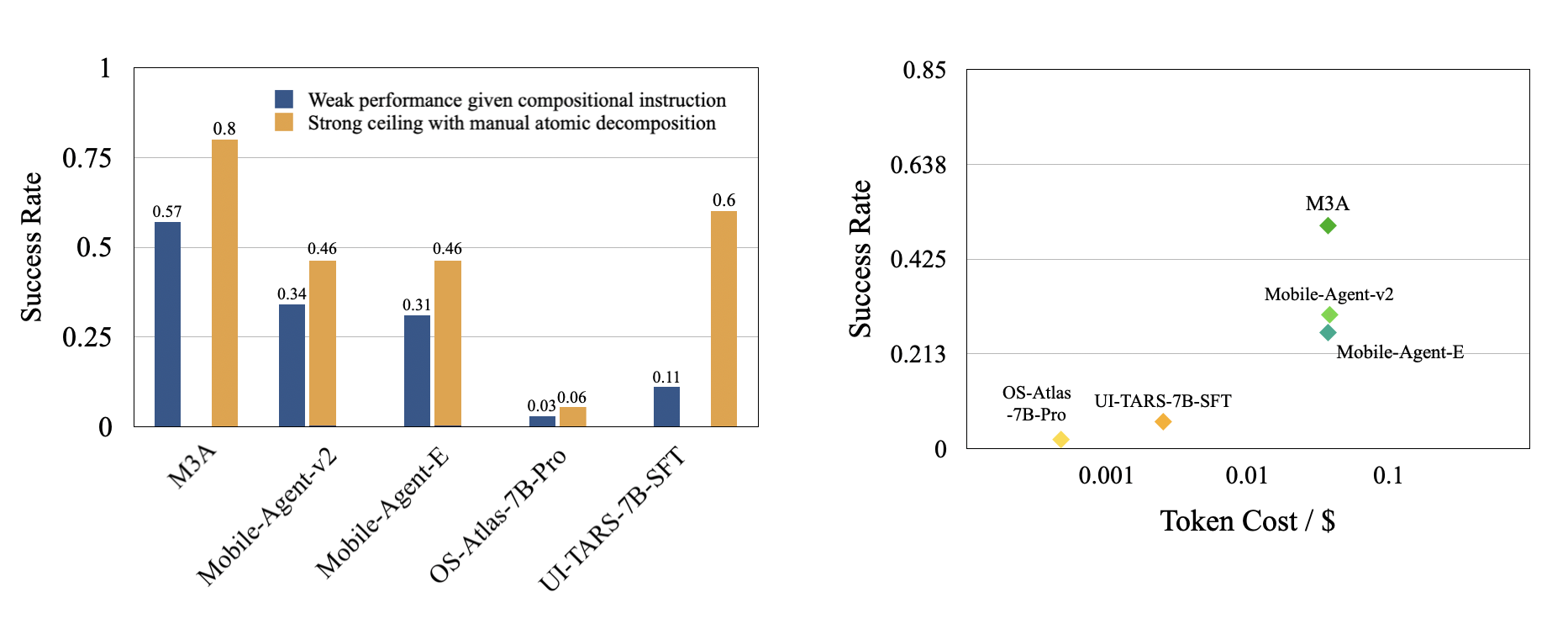
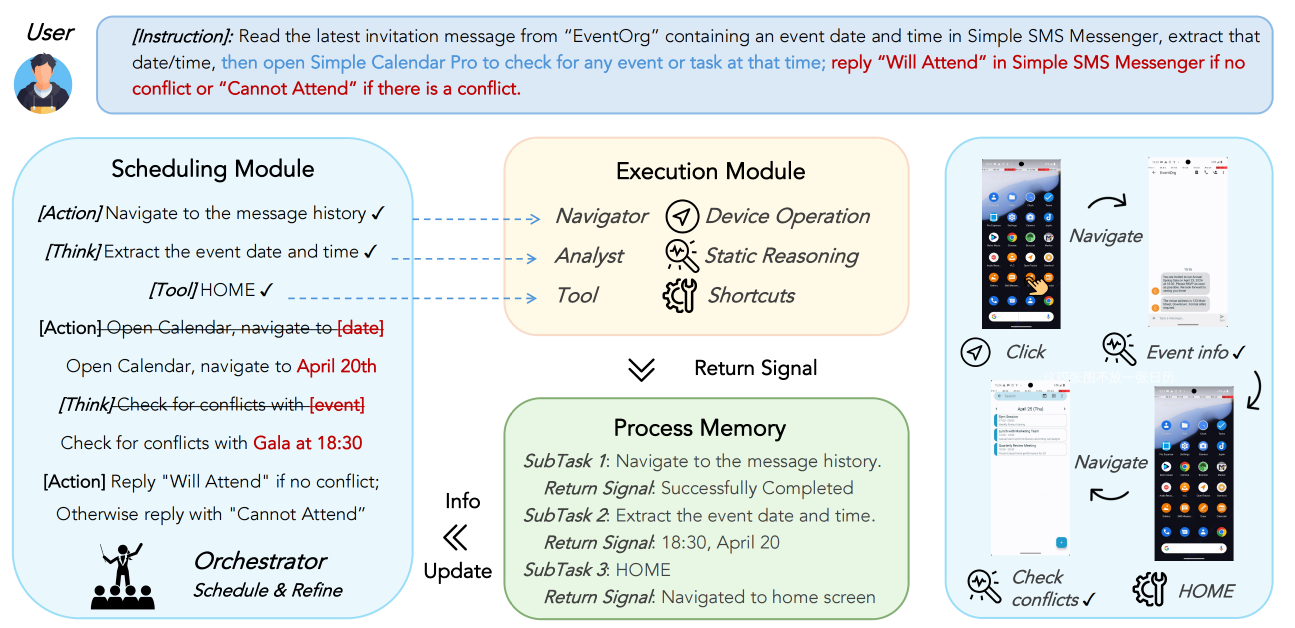
Task Instruction 1: Search for the Starbucks Americano on both Meituan and Ele.me, then place an order on the platform with the lowest price, and stay on the order-confirmation page.
Task Instruction 2: In Markor, open "Groceries.md", "Supplies.md", and "PartyItems.md". Each file contains items in "- ItemName (X)" format, one per line. Calculate the total quantity of each unique item across all three lists, then create a new note "PopularItems.md" listing items sorted by total quantity (highest → lowest) in the same "- ItemName (N)" format. End the note with "Total unique items: X".
